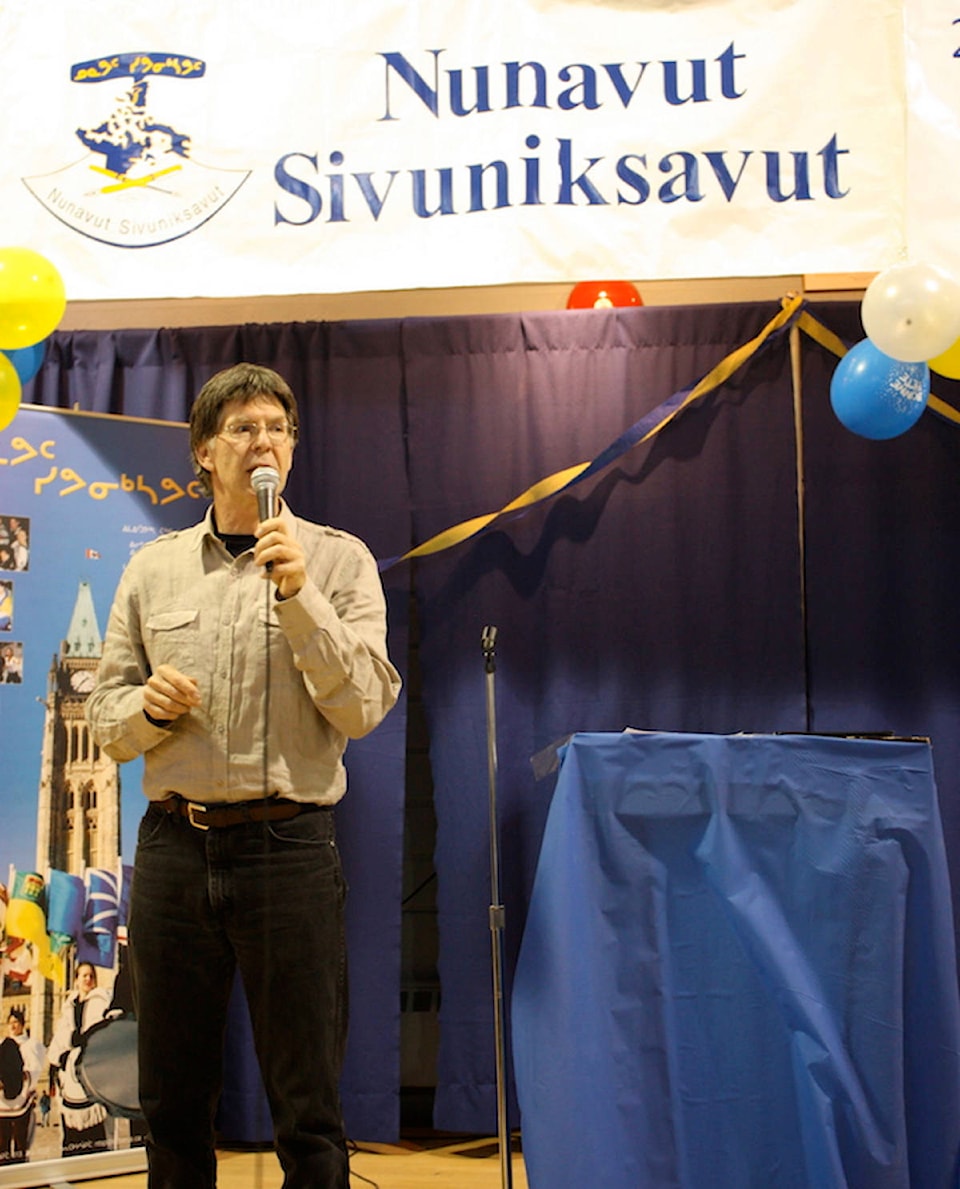Graduation day for Nunavut Sivuniksavut students has been a poignant occasion for Morley Hanson for 31 years, but on May 20 it was particularly touching because it was his last as the Inuit post-secondary program’s executive director.
“I’m feeling all kinds of emotions, I guess. It was such a special time,” Hanson said the next day.
He’s witnessed many a transformation over three decades, and even within each academic year as students grasp the weight and inequity of a colonialist history and how far their people have come in a fight for rights and recognition.
“For students to learn about their story and how there was a group of (Inuit) people who were determined to reverse the negative impacts of all of that colonial history … yes, it’s a story full of heartbreak and tragedy and shameful occurrence,” Hanson said, “but for students to see that that’s not the end of the story as it has been for so many Indigenous peoples around the world, I guess that was the biggest thing for me. Realizing how important this story was to them and how meaningful it was … to see students stand up and say things like, ‘I’m no longer ashamed to say that I’m an Inuk,’ or ‘I’m so proud of who I am and where I come from.’”
Hanson started with Nunavut Sivuniksavut (NS) in 1988, the program’s fourth year of operation. He and his wife and two young children packed up and moved from northern Saskatchewan so he could build his career in Ottawa.
His initial knowledge of the plight of the Inuit was admittedly limited. He’d learned bits and pieces from watching televised Constitutional conferences in the early 1980s, what he’d seen of a 1960s National Film Board series and some informal reading.
“It was a brand new world to me,” he said.
But it was a pivotal time. Being only a few streets away from where the Tunngavik Federation of Nunavut (TFN) – the precursor to Nunavut Tunngavik Inc. – was negotiating the Nunavut Land Claim Agreement, Hanson and NS students would sometimes sit on the sidelines and listen to discussions in the TFN boardroom or have negotiators come to NS as guest speakers.
Hanson said he recalls being accepted by the Inuit he met and he rapidly developed an appreciation of how Inuit demonstrated a “persistence, solid perseverance and patience and determination … to seek a just relationship with Canada, and that was just so remarkable.”
He has also witnessed revolutionary changes within NS. The program became incorporated in 1999, forming a board of directors, with tremendous support from the late Jose Kusugak, former president of Nunavut Tunngavik, Inuit Tapiriit Kanatami and the Kivalliq Inuit Association. Most of the board members today are former NS students, Hanson noted.
The curriculum became more refined – with significant input from students – and an affiliation was formed with Algonquin College, which brought greater academic accreditation.
Hanson, who earned the Order of Canada in 2013 for his work as an educator, has seen more than 500 students go through NS, with as few as 12 per year in the early days but as many as 42 in more recent times.
The number of staff also grew and more Inuit instructors were hired, including former students, and Hanson is hoping to see more graduates become NS educators. His successor as executive director is Lynn Kilabuk, who’s from Pangnirtung.
“That feels very good,” he said of turning over the reins to a Nunavummiuq.
Moved to tears
Another highlight that he cited was the student cultural performances, which became a popular feature at graduation ceremonies and at Ottawa events, such as Winterlude.
He recalled a memorable moment when a prominent Inuit-rights leader observed one of the early student performances of traditional Inuit songs and dance in 1999.
“I looked over and I could see tears coming down his face because here he was seeing young people practising something which had for so long been repressed and not celebrated among youth,” said Hanson. “It brings them pride and confidence.”
There were also numerous student demonstrations against the international seal ban as they tried to educate others on Inuit culture and myriad trips to global destinations where the students acted as Inuit ambassadors.
Although the first year away from home is stressful for many students – and NS strives to provide psychological supports – the studies and interactions build knowledge, confidence, passion and inspiration, according to Hanson.
“That’s what allows them to want to be engaged in furthering and bettering the future of Nunavut and their communities,” he said. “They always get to the end of the year and say, ‘Gee, did that ever go by fast. We don’t want it to end.’”
Pond Inlet’s Jena Merkosak, who was enrolled in NS from 2010-2012, thanked Hanson for his years of dedication and wished him well in retirement.
“I am both happy and saddened to hear he is leaving NS as he has always been there and made NS such a special program,” said Merkosak. “I remember I would look forward to attending his classes and listen to his speeches. His enthusiasm held such strength and wisdom that it was contagious and inspiring. He and the NS program helped me realize many things which created a foundation to stand firm in both my cultural identity and academia, which I believe other students can attest to.”
Hanson’s retirement plans include devoting time to various projects around his home, such as a finishing a kayak in his workshop, and more travel.
“I’ve got to figure out what my purpose now in life is,” he said. “It’s like starting a new phase of life, I’m going to have to figure it out.”
